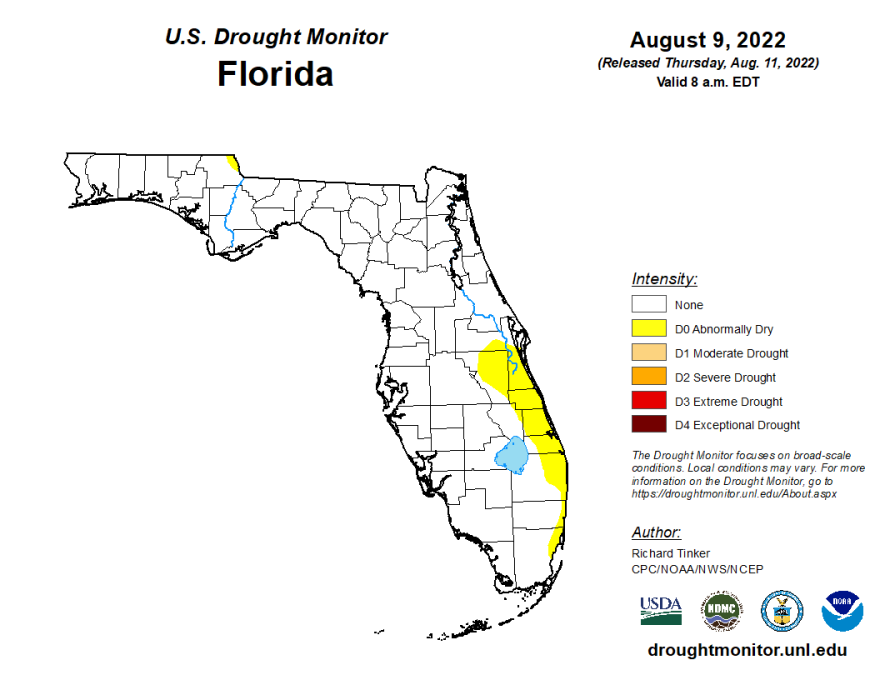A good rainstorm can be welcome in dry or drought conditions. But when the ground is parched, rain water can fail to saturate the ground, resulting in the risk for a flash flood.
"A drought hardens the ground," Meteorologist Justin Ballard said, "when it rains, it's like pouring water on concrete." Currently, the space coast and treasure coast are experiencing abnormally dry conditions. "Areas such as these can be suspectable to localized flash flooding, should there be excessive rain fall," Ballard said. According to the U.S. Drought Monitor, the southeast coast has experienced a deficit of 7 to 10 inches since the first week of June.

A popular tweet further illustrates what happens when drought-parched ground gets rained on. In a video, Dr. Rob Thompson of the University of Reading is seen placing three glasses of water upside-down in wet, normal, and dry ground. The water in the glass over the wet ground is quickly sucked up into the soil. The water over the normal ground slowly absorbs. But the water over the dry ground barely seems to absorb at all.
In this experiment Dr Rob Thompson of @UniRdg_Met shows just how long it takes water to soak into parched ground, illustrating why heavy rainfall after a #drought can be dangerous and might lead to flashfloods. @R0b1et @UniRdg_water pic.twitter.com/zbb3xLTXdK
— Uni of Reading (@UniofReading) August 10, 2022
Flash flooding can be destructive and deadly. The National Weather Service recommends looking out for any flash flood warnings following heavy rains. Even a few inches of rapid flowing water is enough to knock a grown adult off their feet. It's critical not to try and walk or drive through flooded areas, and find high ground if possible.

